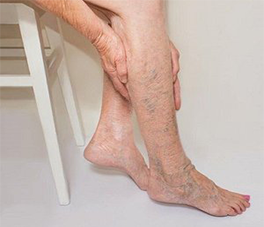Treatment-Diabetic Foot Care


If you have diabetes, complications from the disease can put you at significant risk for amputation of a foot or leg. Diabetic foot care is a simple list of things you can do daily—at home, guided by your doctor—to protect your feet against wounds and avoid amputation.
Your risk for wounds on your feet leading to amputation increases the longer you have diabetes. Proper foot care is important for the rest of your life.
Your feet experience a lot stress every day as you put on shoes and walk. With diabetes, your feet are particularly prone to wounds because:
Proper diabetic foot care has 3 simple components:
 Nerves are the ‘wiring’ of the body. They carry messages (feelings) to your brain from the rest of your body. The nerves to your feet are the most likely to be affected by diabetes.
Nerves are the ‘wiring’ of the body. They carry messages (feelings) to your brain from the rest of your body. The nerves to your feet are the most likely to be affected by diabetes. Podiatrists are experts in looking after feet and lower limbs. They are highly trained health professionals who deal with the prevention, diagnosis and management of foot problems. You don’t need a referral to seek advice or treatment from a podiatrist, however, a referral from your doctor under a team care arrangement (TCA) can assist in covering the fee for this service.
Podiatrists are experts in looking after feet and lower limbs. They are highly trained health professionals who deal with the prevention, diagnosis and management of foot problems. You don’t need a referral to seek advice or treatment from a podiatrist, however, a referral from your doctor under a team care arrangement (TCA) can assist in covering the fee for this service. See your doctor if:
See your doctor if: